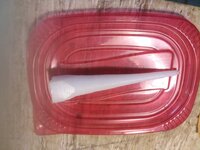Greetings From Nebraska - I see by your last post that you are spot on with what I learned over time.
I used to try to scrape, chip, or turn off the CA buildup on the Non-Stick bushings, and frequently damaged them in the process. Since starting to drop them in a 8 oz jar of Acetone, they are always in like-new condition.
As for the buildup "fingernails" on the blanks, I used to manually sand them on a flat surface, but I've found that the safest and most accurate method is to sand them on my squaring jig by lightly touching the ends just enough to take off the CA fingernail.
Finally, I put a few drops of thin CA on a paper towel folded to be like a blotter and touch the ends. This final step of sealing the ends back up with CA has resolved an occasional adhesion problem I used to have where the CA on the ends of the blank would let go a little causing a light, foggy looking spot between the CA and the blank (hard to describe).
Good Luck as you get your regimen refined.
Regards,
Dave
PS. Someone asked about what the advantage is to using turning between centers for finishing over using a pen mandrel and the non-stick bushings. The biggest advantage I see, as related to finishing, is that using "pointy" non-stick turn between centers for finishing is more advantageous for 8mm and 7mm tubes because the bushing goes all the way into the tube instead of just butting up against it. The taper angle allows more "wipe-across" without as much build up right at the bushing-tube/blank interface.

